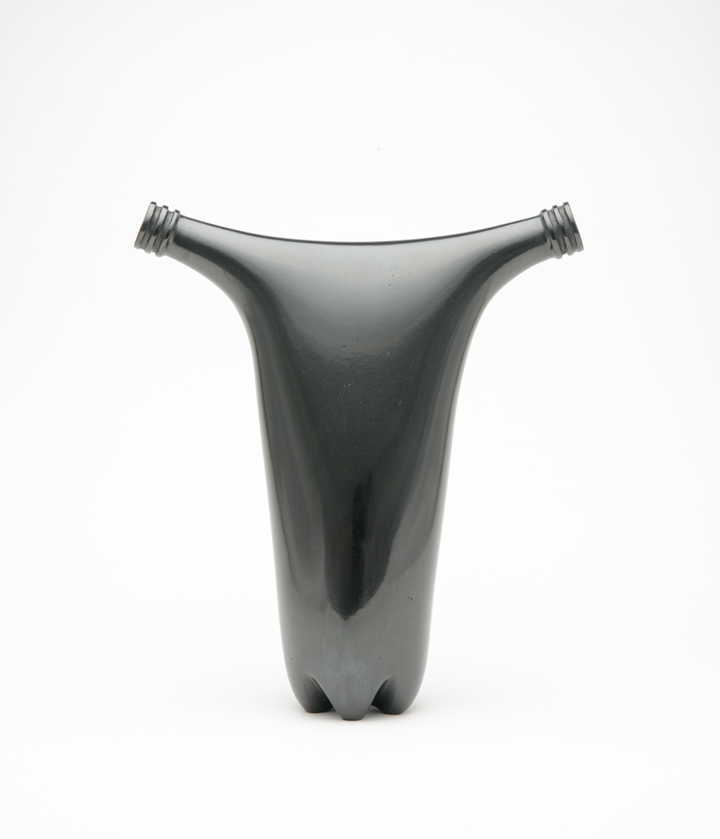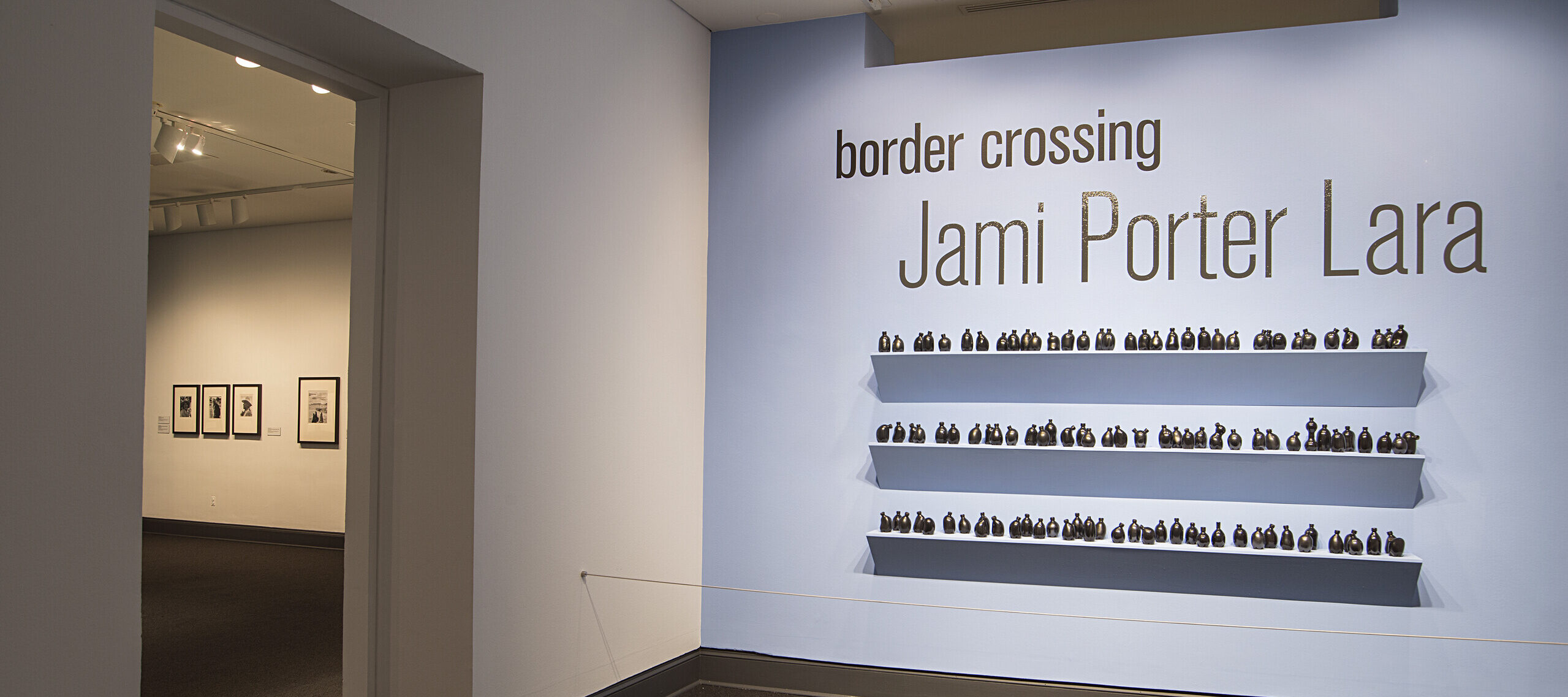Now on view at the National Museum of Women in the Arts, Border Crossing: Jami Porter Lara presents recent work by Albuquerque-based artist Jami Porter Lara (b. 1969), who hand-builds and pit-fires clay sculptures resembling a ubiquitous icon of modern life—the plastic bottle.
The shapes and titles of Porter Lara’s sculptures reflect her interest in the artifacts of contemporary culture.

Form and Function
Jami Porter Lara uses ancient techniques to create her work, and she combines references to the contemporary plastic bottle with references to other vessels that humans have used throughout time. She says, “I was interested in something that might be evocative of a gourd-shape, and, of course, gourds were one of the earliest vessels used by humans. I was also making things that referred to more classical forms like the amphora, again trying to make a connection between the contemporary plastic bottle and the most ancient of iconic vessels in human history.”
Some of her vessels have human or anthropomorphic qualities: “The top of the vessel’s neck is like a little head, its bottom is evocative of feet, and any kind of narrowing in the center is like a waist. Just as that gourd shape made me think of the connection to our shared human history of using gourds as vessels, the figurative pieces have a similar message about the continuity between what’s natural and what’s human and what’s technological.”

What’s in a title?
Many of Porter Lara’s works have titles such as LDS-MHB-WVBR-0416CE-08. She borrowed her titling system from the field of archaeology, in which objects are identified by a series of numbers and letters that convey information such as where an item was found and when it was unearthed.
- The letters in the first section refer to where the object was made. In this example, “LDS” stands for Los Duranes Studio, the name Porter Lara has given her home studio.
- The first two letters in the second section indicate where Porter Lara harvested her clay. Here, “MH” refers to Magdalena Highway, the unofficial name of the nearby route US 60. The third letter of this section refers to the color of clay. “B” stands for “buff” or “beige.”
- In the third section, the first letters relate to nicknames Porter Lara gives her pieces. In this example, “WV” stands for “Wedding Vase,” a double-spouted vase common in Pueblo pottery.
- The second half of the third section refers to the process Porter Lara used to create the work. “B” indicates a work was burnished, and “R” stands for “reduced,” the firing method.
- The fourth section of the title is the date on which the work was fired. In this example: April 2016 of the Common Era (CE).
- The last section indicates which iteration of a shape this object is. This example is the eighth vessel Porter Lara made in this particular shape.
Visit the museum to see Border Crossing: Jami Porter Lara, on view through May 14. Learn more through the audio guide and meet Jami Porter Lara at the museum for a special Artists in Conversation program on April 6, 2017.

